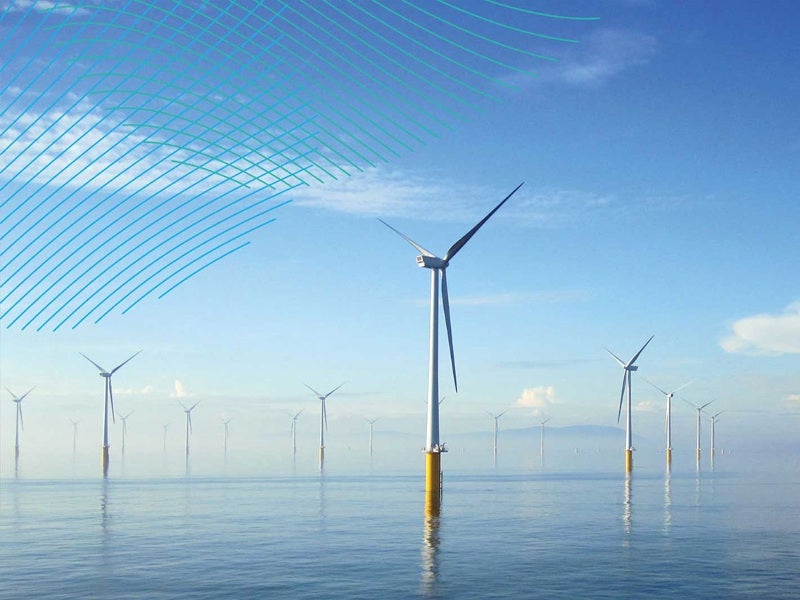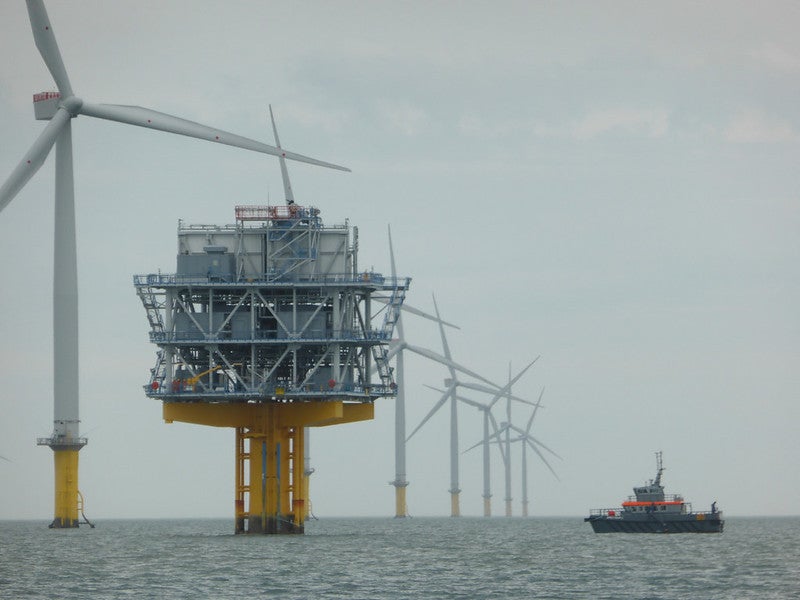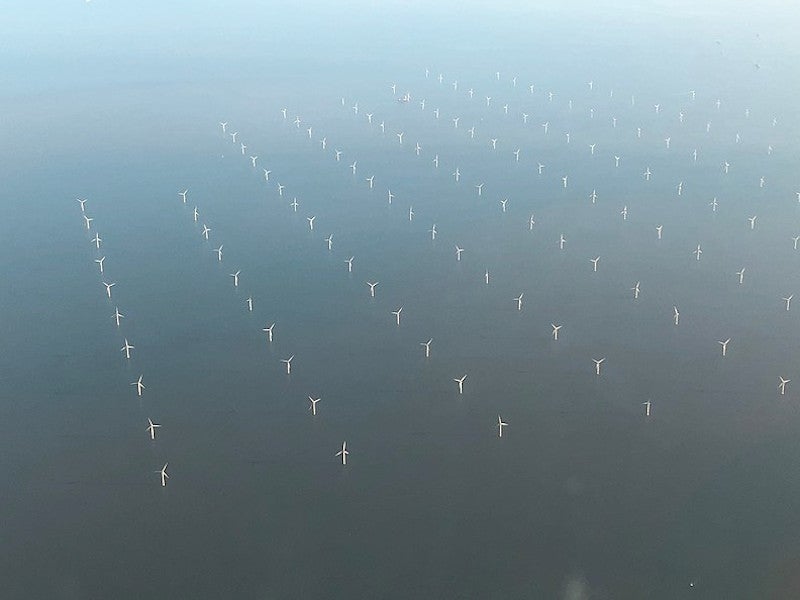The London Array wind farm located off the coast of Kent in the UK is one of the world’s biggest offshore wind farms. At 630MW installed capacity, it was the world’s biggest offshore wind farm at the time of its commissioning in 2013, which was overtaken by the 659MW Walney Extension offshore wind farm in September 2018.
The London Array offshore wind farm is owned and operated by London Array Limited, a consortium of RWE (previously E.ON, 30%), Orsted (25%), La Caisse de dépôt et placement du Québec (25%), and Masdar (20%).
The onshore construction on the wind farm was started in July 2009 followed by the start of offshore works in March 2011, while the first power from the wind farm was produced in October 2012 and the installation of the last turbine was completed in December 2012.
The London Array wind farm was originally planned to be developed in two phases for a total installed capacity of 1GW. However, the 370MW second phase was canceled in 2014 over concerns of the hazardous impact on certain bird species in the project area.
The 630MW offshore wind farm produces enough electricity to power approximately 560,000 UK homes while displacing approximately 900,000 tonnes (t) of carbon dioxide (CO2) annually.
Location and site details
The London Array wind farm is located approximately 20km off the coast of Kent and Essex, in the outer Thames Estuary, UK.
The giant wind farm is spread over approximately 100km2 in 25m-deep waters between two sandbanks namely, Long Sand and Deep Knock. The average wind speed at the site is estimated to be 11.9m/s.
London Array wind turbines
The 630MW offshore wind farm comprises SWT-3.6-120 wind turbines from Siemens Gamesa. With a 120m-diameter rotor and 58.5m-long blades, each turbine has a swept area 11.300m² and provides a rated output of 3.6MW at 13m/s wind speed.
Mounted on 67m-long monopoles, each turbine measures 147m-tall from the water surface to the tip of the blade. The cut-in and cut-out wind speeds for the turbines are 3m/s and 25m/s respectively.
Power transmission
The electricity generated by each turbine is gathered and transmitted through a network of approximately 200km of 33kV inter-array undersea cables to two identical offshore substations, located at a distance of 6.5km from each other on either side of the wind farm site.
Each 22m-high and 1,250t offshore substation comprises three levels of structural steel decks mounted on a monopole foundation.
The electricity received at the offshore substations is stepped up to 150kV and further transmitted onshore to the Cleve Hill substation located to the north-east of Kent through four high voltage undersea export cables.
The Cleve Hill onshore substation houses four transformers that step up the voltage to 400kV for connection to the National Grid transmission network.
Project financing
The European Investment Bank (EIB) provided a loan of £250m to Dong Energy (now Orsted) for the London Array wind power project in June 2010 which was guaranteed by the Danish Export Credit Agency EKF.
Contractors involved
Global engineering company Worley was contracted by Siemens Gamesa Renewable Energy (SGRE) to provide statutory inspections and general maintenance services for the wind-turbine-generators of the London Array wind farm in June 2020.
James Fisher Marine Services (JFMS) was appointed by London Array to deliver the balance of plant (BoP) operations and maintenance (O&M) services for the turbines and the meteorological mast as well as statutory inspection services for the offshore substations of the wind farm for a period of five years in November 2018.
Siemens provided the turbines as well as the electrical equipment for two offshore substation platforms of the wind farm.
A joint venture between Per Aarsleff and Bilfinger Berger supplied the monopole foundations for the turbines as well as the offshore platforms.
A consortium of MPI and A2SEA provided marine crew and vessels for the installation of foundations and turbines.
Future Energy, a joint venture between Fabricom, Lemants, and Geosea, was responsible for the design, construction, and installation of the offshore substations.
JDR Cable Systems supplied approximately 200km of 33kV inter-array cables while Nexans Norway was the supplier of approximately 222km of 150kV export cables for the wind farm.
Visser & Smit Marine Contracting (now VBMS) and Global marine Systems were responsible for the installation of the export and inter-array cables for the project.





